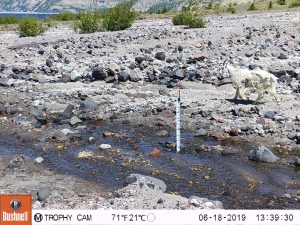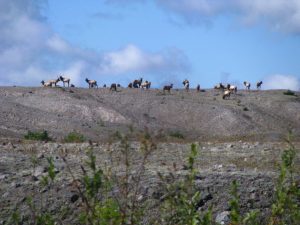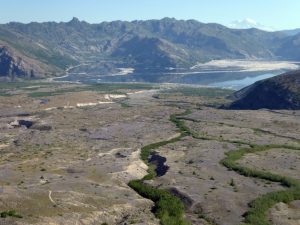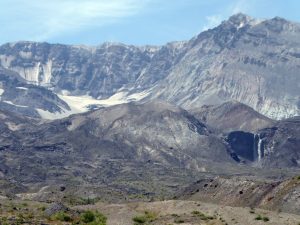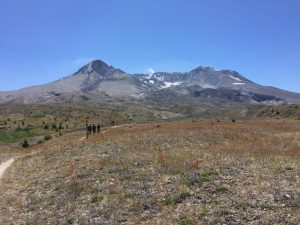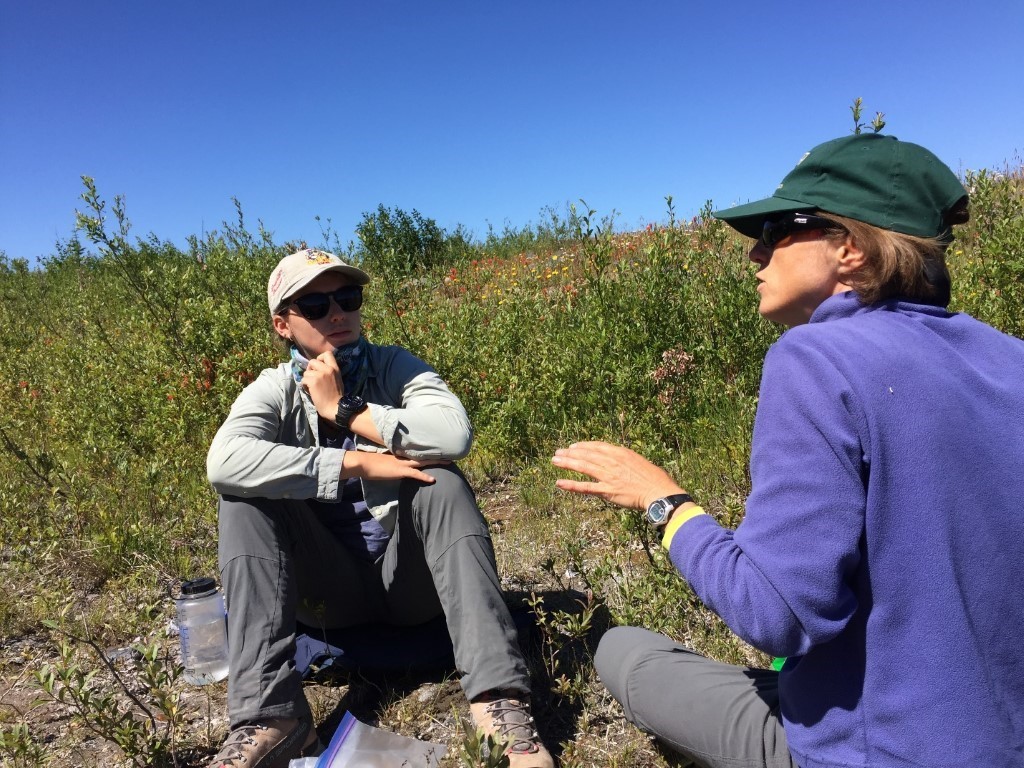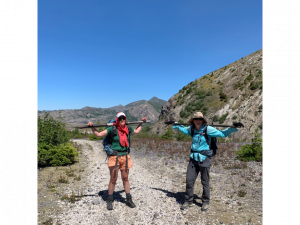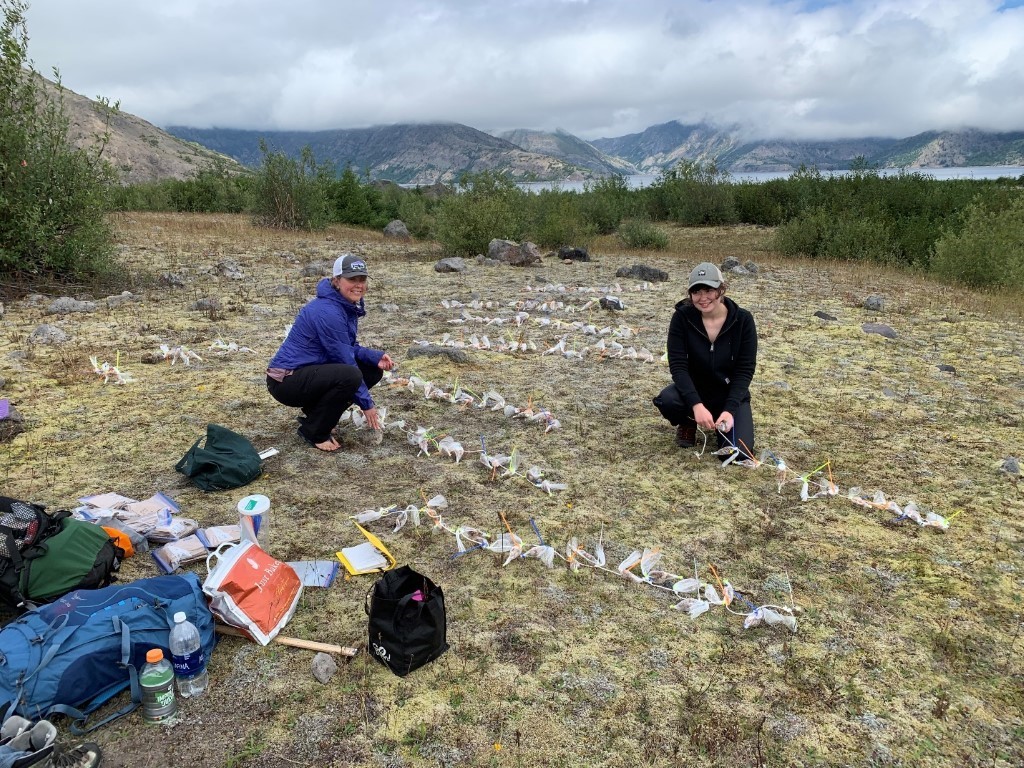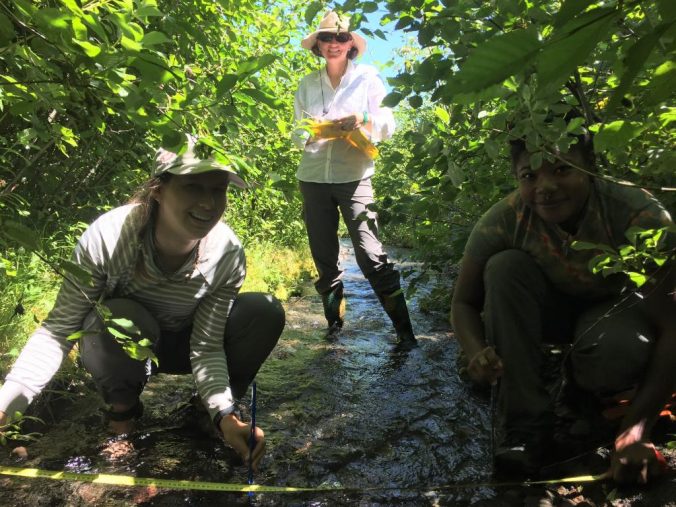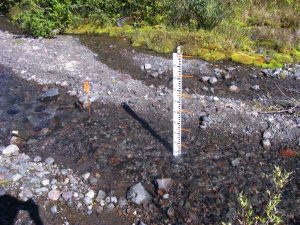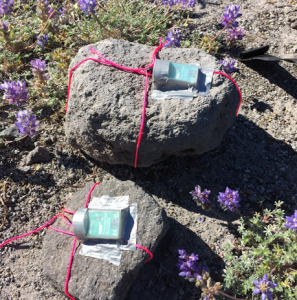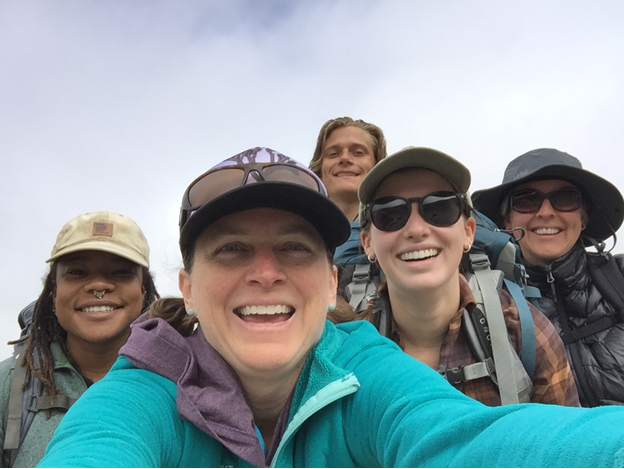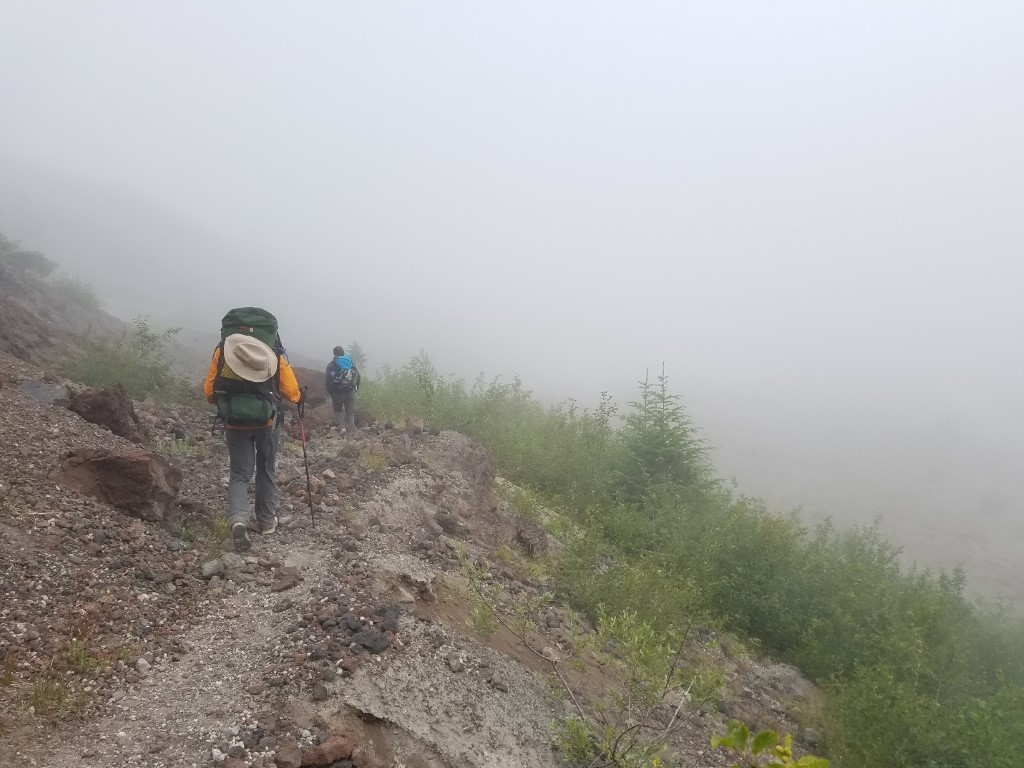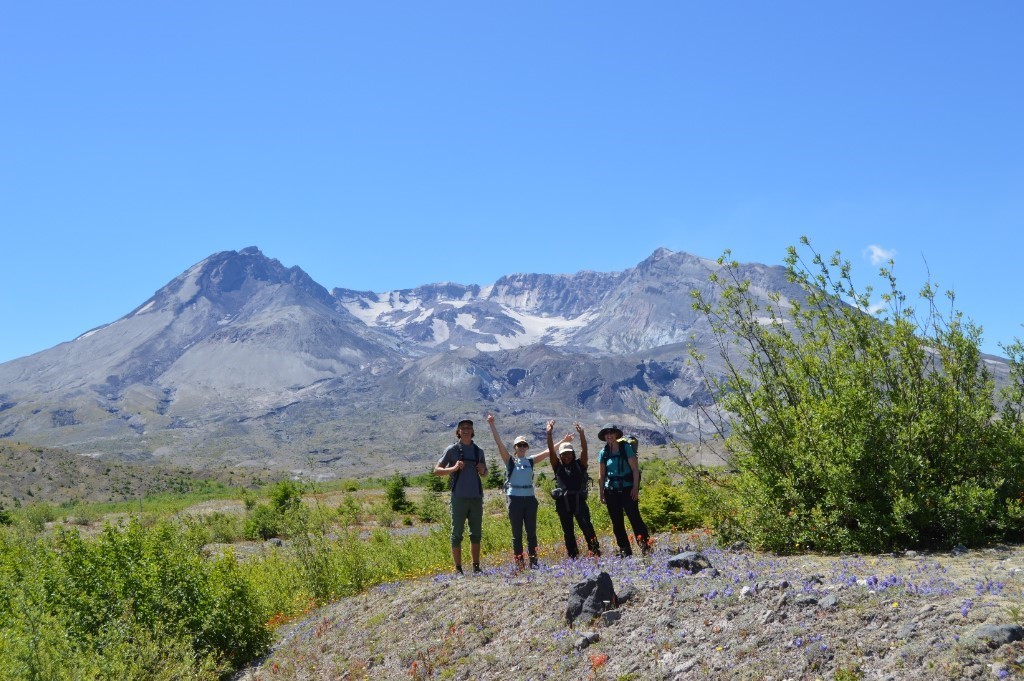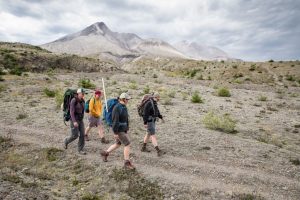
With the Mount St Helens National Volcanic Monument as a protected landscape, our team has a 3-year permit to do research on the Pumice Plain. We hike several miles to reach our study sites, often packing along heavy equipment, but the views of the volcano are worth it!
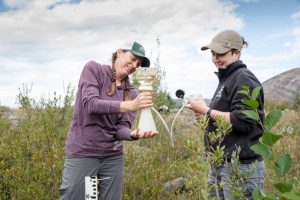
Our research in the newly formed watersheds of the Pumice Plain includes chemical analysis and water quality sampling. These data help us to understand the potential differences in water sources across Pumice Plain watersheds and predict influences on ecosystem function!
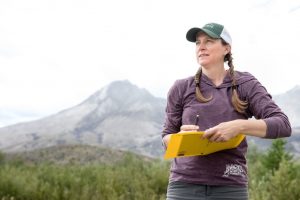
The most important thing in field work is proper documentation! What may seem like a tedious task, is a vital component of ensuring our team can continue publishing data about the primary succession of riverine communities at Mount St. Helens! Thanks to Evergreen State College for the great photos!
